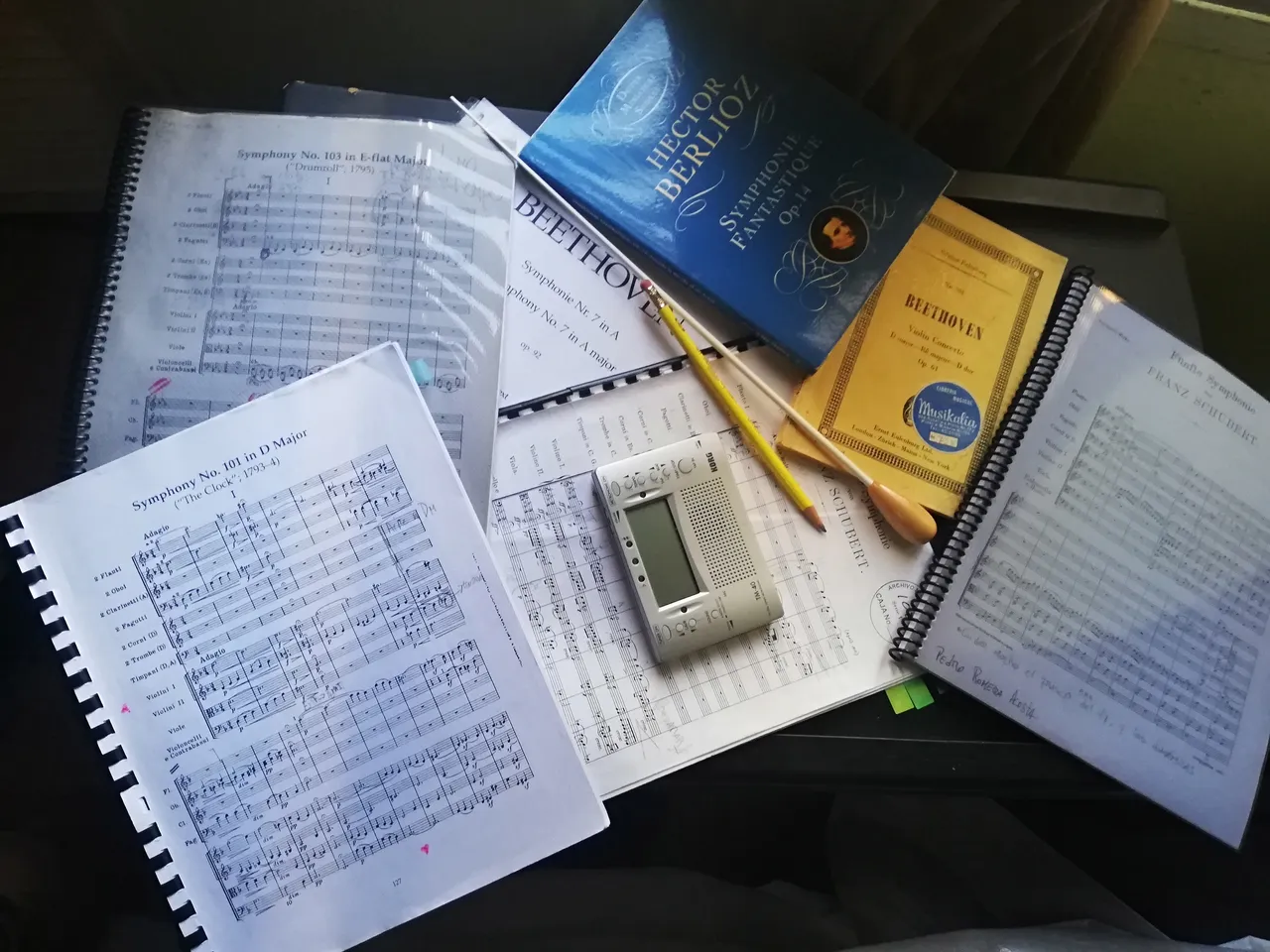
Hola Querida comunidad de Hive!! hoy les traigo el segundo post de la serie, El Arte de la Dirección Orquestal espacio en donde tengo el gusto de hablarles sobre todo el proceso creativo y de estudio que involucra el bello arte de la dirección orquestal. En esta publicación les vengo a describir y contar, acerca todo el aprendizaje y trayectoria que involucra estudiar una partitura.
Hello Dear Hive! community, today I bring you the second post of the series, The Art of Orchestral Conducting space where I have the pleasure to talk about the whole creative and study process that involves the beautiful art of orchestral conducting. In this publication I come to describe and tell you about all the learning and trajectory that involves studying a score.
Antes de empezar, quiero hacer aclaratoria de que todas las fotos que verán en este post, están tomadas por mi persona con los siguientes dispositivos: Haweii P20 Lite, Iphone 6.
Before we start, I want to clarify that all the pictures you will see in this post, are taken by me with the following devices: Haweii P20 Lite, Iphone 6.
¿Como es el proceso de estudio de una partitura orquestal?/How is the process of studying an orchestral score?
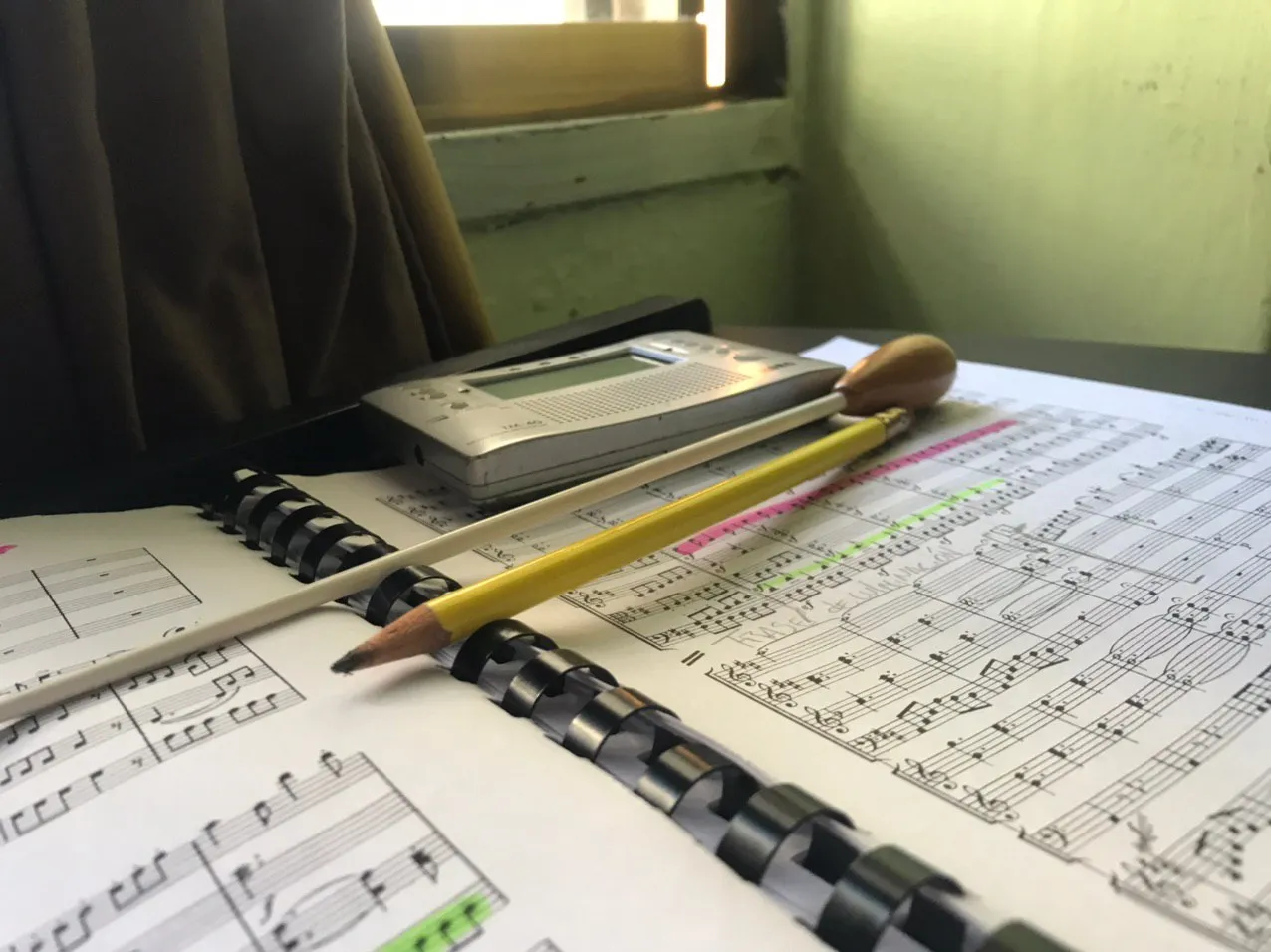
Para comenzar a estudiar el score o partitura orquestal, primero hay que saber que época y obviamente el compositor, debido a que estos dos factores van a depender muchísimo acerca de que manera esta escrita y obra, debido a que hay muchas composiciones como los requiems o sinfonías (que son géneros que se llevaron a cabo por mucho tiempo y se siguen escribiendo) estas van a cambiar debido al autor y a la época. Ya que la visión del autor con respecto a una obra y cómo la construye va depender mucho de la época que esté o haya vivido (épocas como el barroco, clasicismo, romanticismo, siglo XX, etc)
To begin to study the score or orchestral score, first you must know what era and obviously the composer, because these two factors will depend greatly on how it is written and work, because there are many compositions such as requiems or symphonies (which are genres that were carried out for a long time and are still written) these will change due to the author and the time. Since the vision of the author with respect to a work and how he builds it will depend a lot on the time he is or has lived (times like the baroque, classicism, romanticism, 20th century, etc)
Ya teniendo esto en cuenta comenzamos por la estructura de la obra ¿Y cómo se estudia esta parte?, la estructura de las obras son, formas o moldes, que los compositores utilizan para expresar su mensaje musical, como lo puede ser una canción, que su estructura constaría de dos partes, o un minuet, que es una danza bailable, que consta en general de tres partes, y estas se subdividen en partes iguales, una sinfonía, que constaría en general de 4 movimientos (movimientos son la cantidad de pequeñas piezas que conforman la sinfonía) que a su vez estos movimientos, por si solos, tienen una estructura por si sola.
With this in mind, we begin with the structure of the work, the structure of the works are, forms or molds, that the composers use to express their musical message, as it can be a song, that its structure would consist of two parts, or a minuet, that is a danceable dance, that consists in general of three parts, and these are subdivided in equal parts, a symphony, that would consist in general of 4 movements (movements are the amount of small pieces that conform the symphony) that as well these movements, by themselves, have a structure by itself.
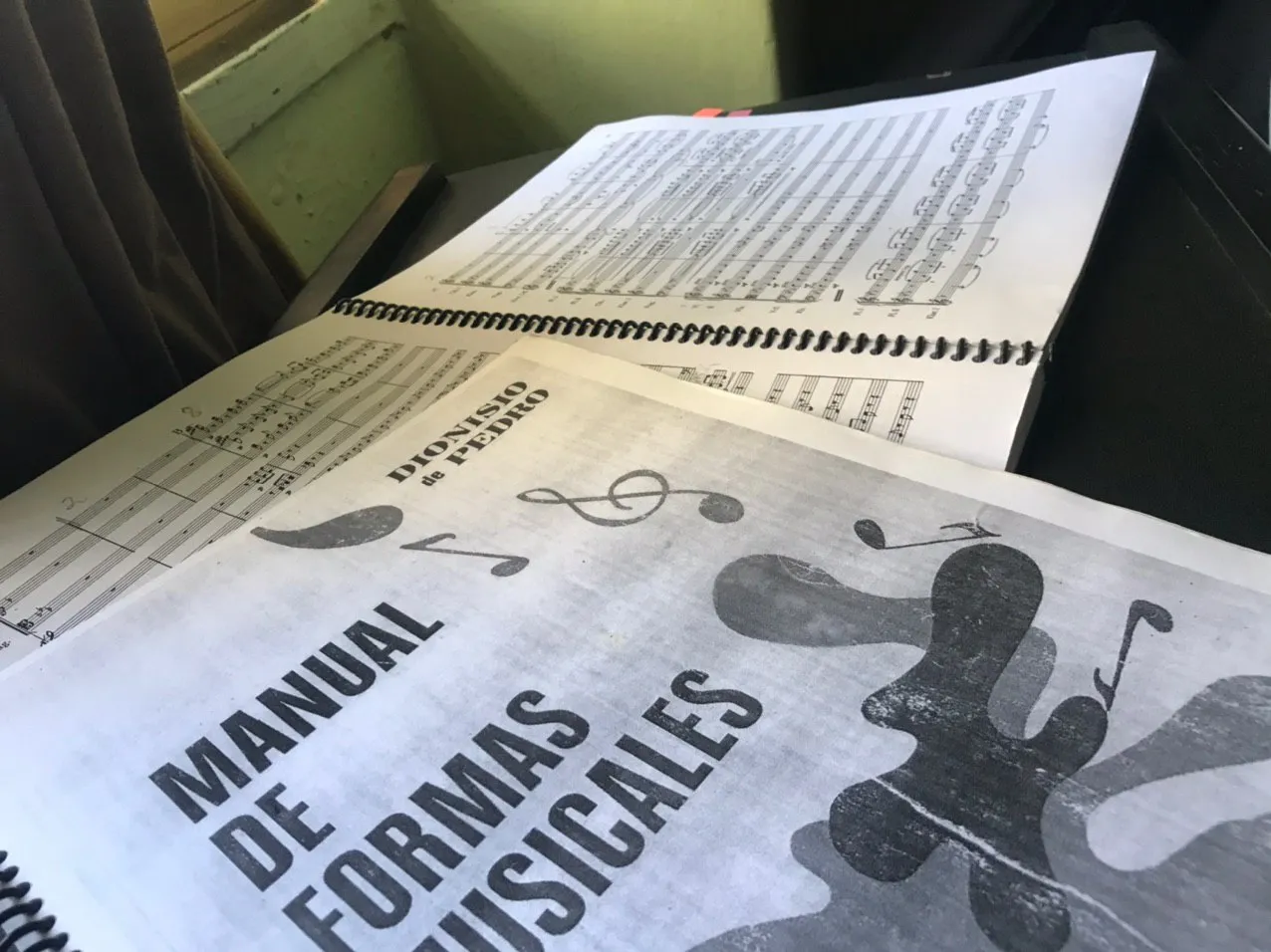
Cabe acotar que a estas estructuras en la música se denominan formas musicales
Dentro de la forma, nos encontramos con la cantidad de música que hay dentro del movimiento, está, a su vez se divide, en pequeñas secciones, cada melodía cada armonía debe ser analizada, el director tiene que estar muy consciente de todo este material que el compositor escribió para así poderlo transmitir a la orquesta y en consecuencia al público. Es un trabajo de introspección, un momento que en lo personal, me lo tomo para meditar, para pensar acerca de las cosas que pasan en la obra y las internalizo y dejo que ellas dejen en mi su huella.
It should be noted that these structures in music are called musical forms.
Within the form, we find the amount of music that is within the movement, it is, in turn is divided, into small sections, each melody each harmony must be analyzed, the director has to be very aware of all this material that the composer wrote in order to transmit it to the orchestra and consequently to the public. It is a work of introspection, a moment that I personally take to meditate, to think about the things that happen in the work and I internalize them and let them leave their mark on me.
Todas esta música que vamos aprendiendo es muy importante tocarla, ya que el análisis no es más que adentrarse en la partitura, descomponer todos los elementos en ella,para poder así tener una concepción clara de la partitura. El director nunca deja de estudiar la obra que esté trabajando debido a que hay días en el cual, se encuentran cosas que antes no se veía.
All this music that we are learning is very important to play, since the analysis is nothing more than going into the score, breaking down all the elements in it, in order to have a clear conception of the score. The conductor never stops studying the work he is working on because there are days when you find things that you did not see before.
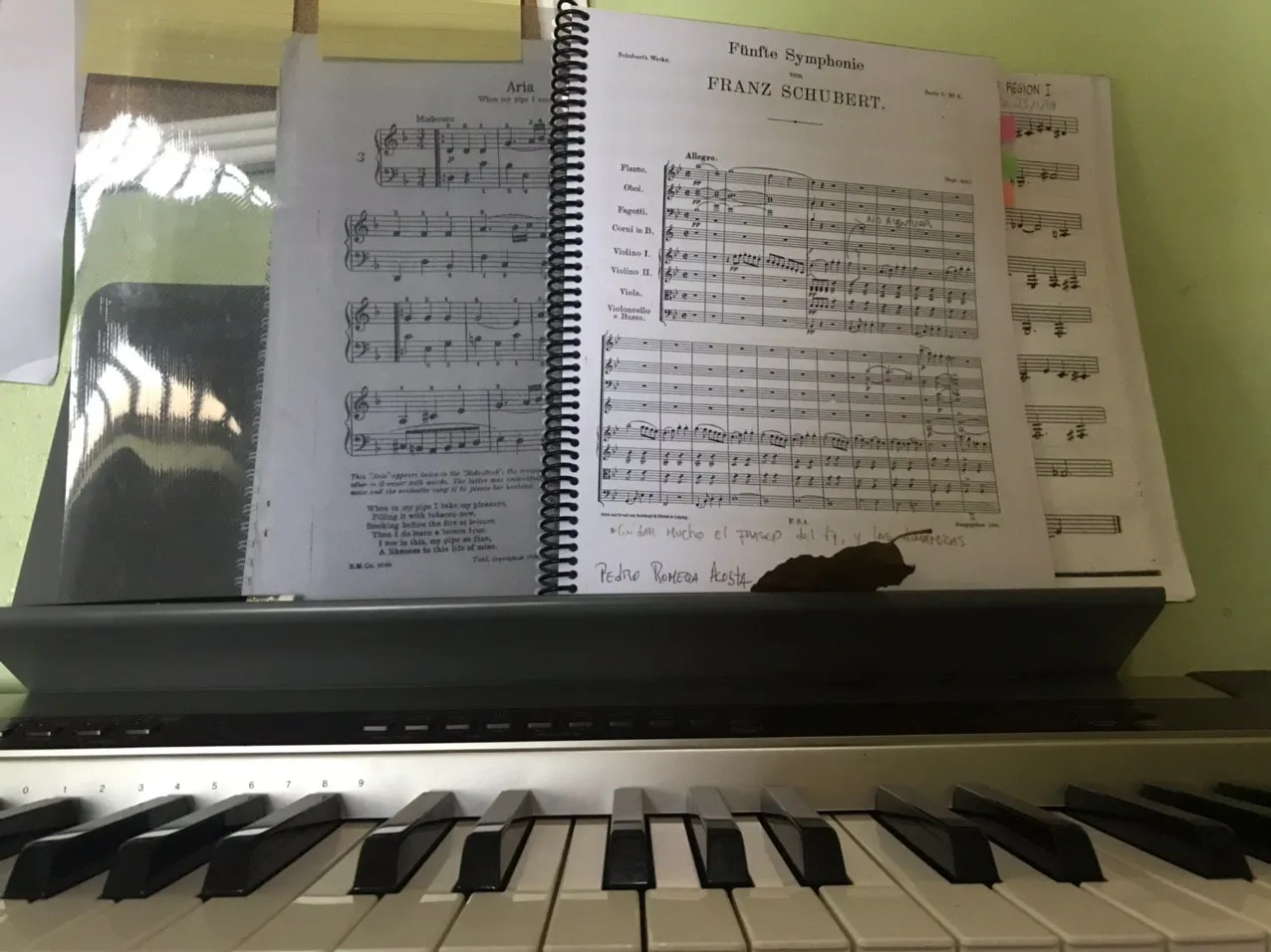
Después es muy importante comenzar a estudiar el gesto, ya que el gesto es la herramienta que nos comunica con la orquesta, cada acorde, cada nota la expresamos dentro de un dibujo visual el cual llamamos esquema, este esquema (dependiendo de los pulsos de la obra) va a representar toda nuestra intención sonora, debemos ser muy claros y específicos a la hora de expresar la música con el gesto ya que, la orquesta necesita la información lo más clara posible en el ensayo y en el concierto. Todo gesto es estudiado por el director, las emociones que contenga la obra, van a ser asumidas por el, y con todo su cuerpo (desde las manos hasta el torso) va a ser una representación vívida del mensaje que le transmitió el compositor. Cada parte, de la obra estará en él.
Afterwards it is very important to start studying the gesture, since the gesture is the tool that communicates us with the orchestra, each chord, each note is expressed within a visual drawing which we call scheme, this scheme (depending on the pulses of the work) will represent all our sound intention, we must be very clear and specific when expressing the music with the gesture since, the orchestra needs the clearest information possible in the rehearsal and in the concert. Every gesture is studied by the conductor, the emotions contained in the work will be assumed by him, and with his whole body (from his hands to his torso) it will be a vivid representation of the message transmitted by the composer. Each part of the work will be in him.
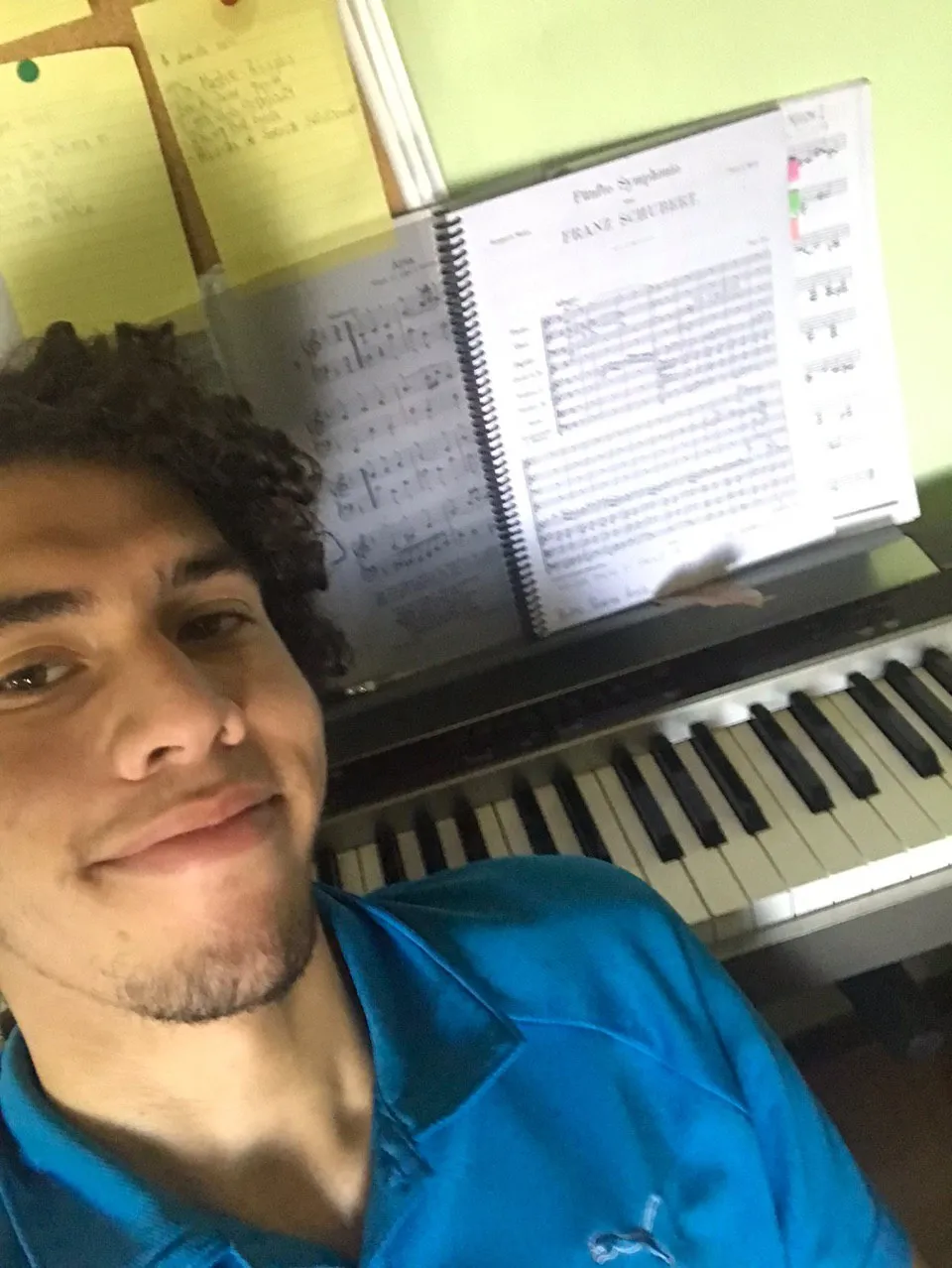
Por último pero nunca menos importante, el director tiene que buscar su propia interpretación procesar este material, y comenzar a crear. Buscar revistas, leer artículos, si es una obra basada en literatura o una ópera debe de leer los textos, en lo personal, yo trato de imaginar la música y sus emociones como una película, trato de analizar cada tema convirtiéndolo en un personaje, y me imagino la historia, y dirijo con eso en mente. Escuchar música pero mucha, el director, debe escuchar otras propuestas interpretativas, DESPUÉS de tener su interpretación personal.
Last but not least, the director has to seek his own interpretation, process this material, and start creating. Looking for magazines, reading articles, if it's a play based on literature or an opera you have to read the texts, personally, I try to imagine the music and its emotions as a movie, I try to analyze each theme making it into a character, and I imagine the story, and I direct with that in mind. Listening to music, but a lot of it, the director must listen to other interpretative proposals, AFTER having his personal interpretation.
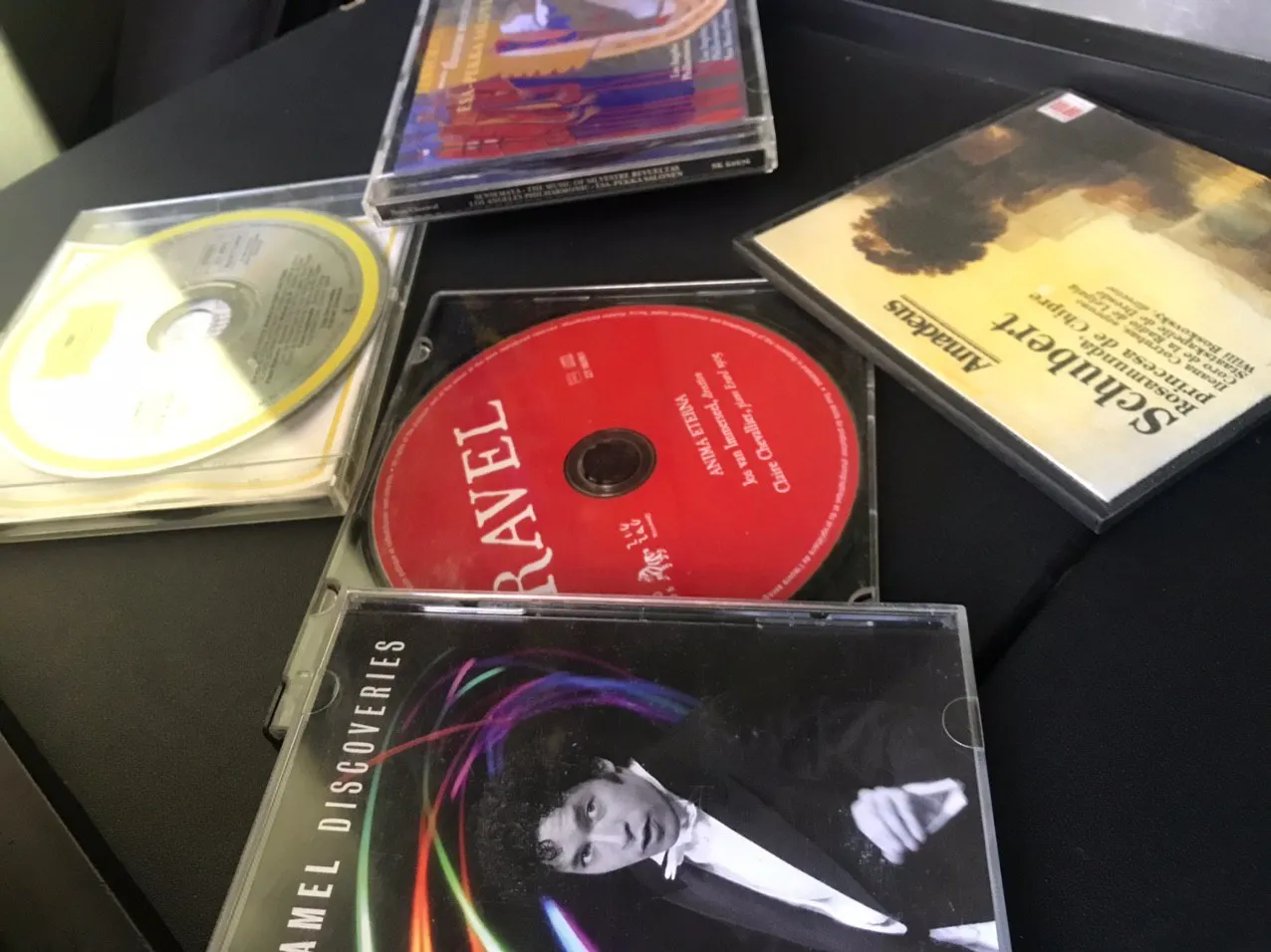
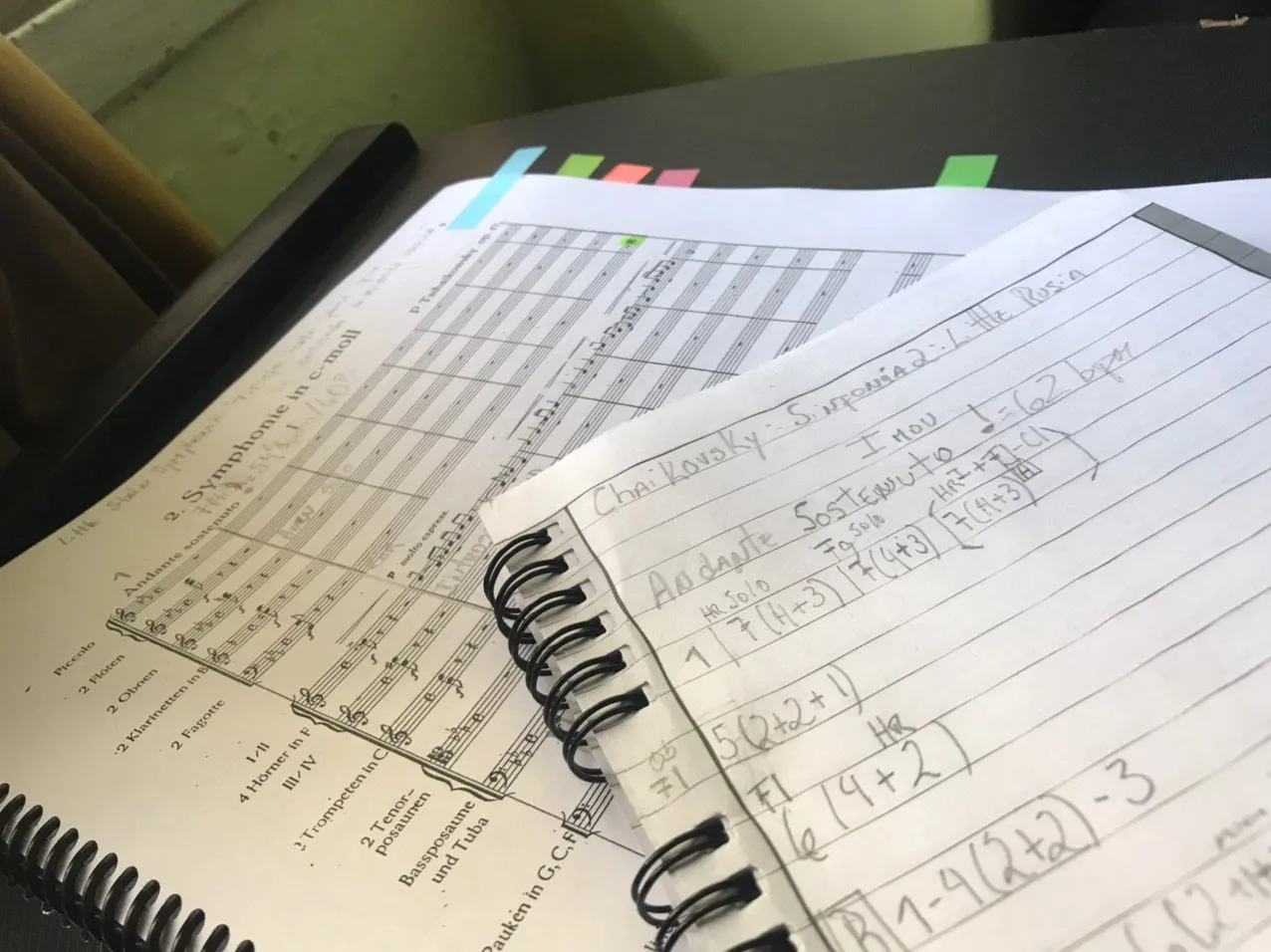
Bueno amigos, espero que les haya gustado este post, queda mucho de esta serie por delante, ya que la dirección orquestal y la música en sí, es un arte infinito que nunca se acaba. Escuchen mucha música, y nos vemos en la siguiente entrada.
Well friends, I hope you liked this post, there is a lot of this series ahead, since orchestral conducting and music itself, is an infinite art that never ends. Listen to lots of music, and I'll see you in the next post.
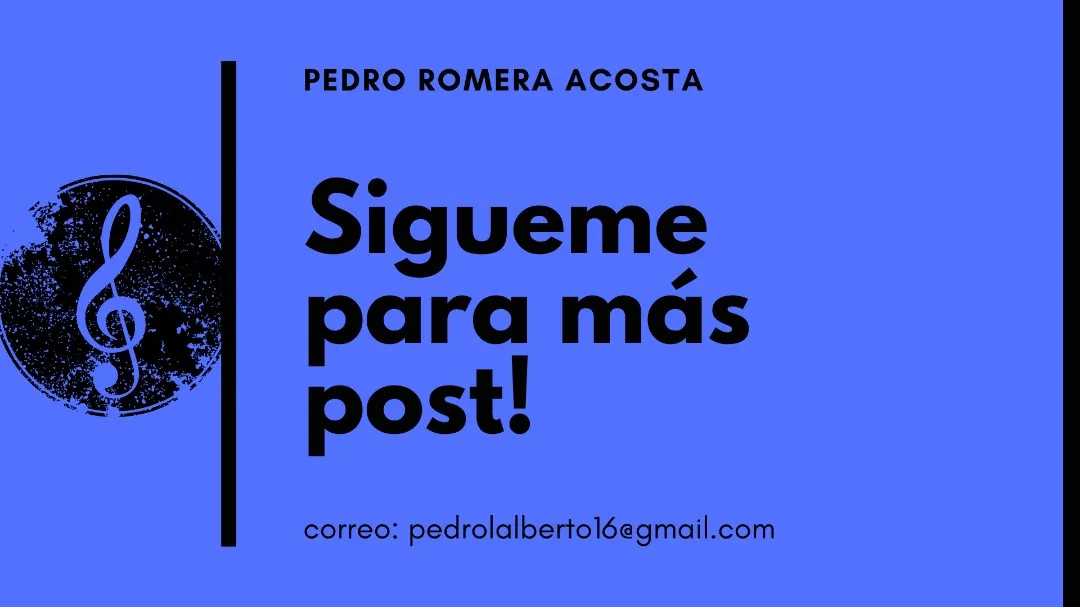
Twitter: schubertlover_
Discord: schubertlover
